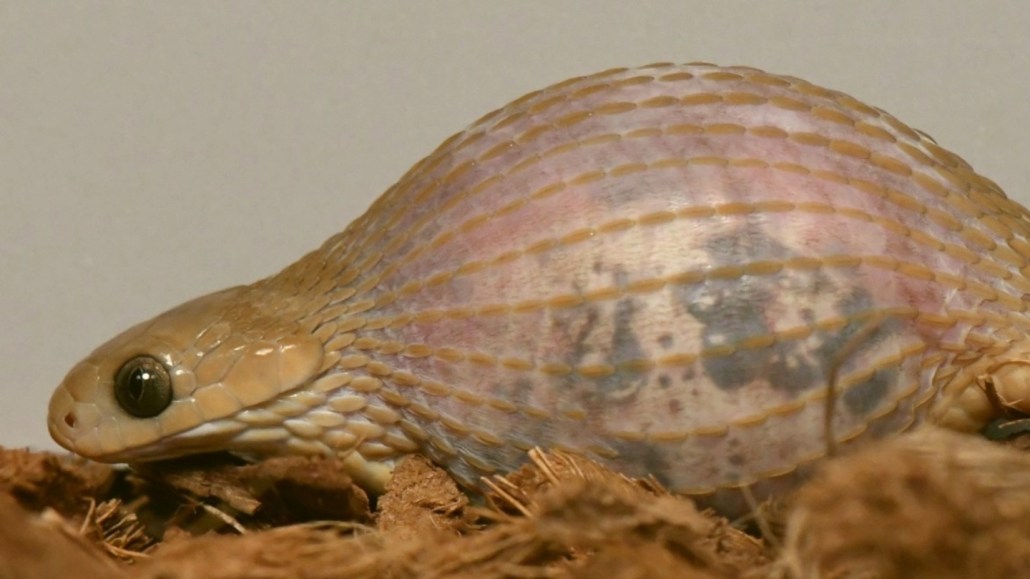Questions for ‘This egg-eater may have the biggest gulp of any snake its size’

Dasypeltis gansi doesn’t have to worry about biting off more than it can chew: It swallows its meals whole!
Bruce Jayne
Share this:
- Share via email (Opens in new window) Email
- Click to share on Facebook (Opens in new window) Facebook
- Click to share on X (Opens in new window) X
- Click to share on Pinterest (Opens in new window) Pinterest
- Click to share on Reddit (Opens in new window) Reddit
- Share to Google Classroom (Opens in new window) Google Classroom
- Click to print (Opens in new window) Print
To accompany ‘This egg-eater may have the biggest gulp of any snake its size’
SCIENCE
Before reading:
1. Watch this video of a snake eating an egg. Describe the steps this snake goes through to eat the egg.
2. Which would surprise you more: an ant carrying an entire raisin or a squirrel carrying an entire raisin? Explain your answer.
During Reading:
1. What is the scientific name of the Gans’ egg-eater snake?
2. Describe the three steps this snake uses to eat an egg.
3. How wide in centimeters was the head of the biggest Gans’ egg eater snake that Bruce Jayne studied? According to Jayne’s study, approximately how wide of an object could this snake swallow?
4. Describe the size of the petite Burmese python (Python molurus bivittatus) relative to the Gan’s egg-eater snake. How did the python’s gulp-size compare with that of the Gan’s egg-eater?
5. What does Jayne say about why the Gans’ egg-eater might have evolved its unique abilities?
6. Why is a snake’s mouth size not a reliable indicator of gulp-size?
7. Besides eggs, what is another snake dietary preference for which Jayne wants to study gape-size?
After Reading:
1. Consider the following statements: (1) That house is big. (2) That house is bigger than other houses on the block. Which one is an example of a relative comparison? How do these statements differ in what they communicate, and which is more informative? Explain.
2. Use an example from this article to show the use of relative comparisons.
3. What measurements were used to quantify a relative comparison in the article? What units were used to make these measurements? Give the measurements from the article.
4. Why might the author of a study choose to use relative values instead of other precisely defined units? How did the comparison help to give context to the research finding? Explain your answer?